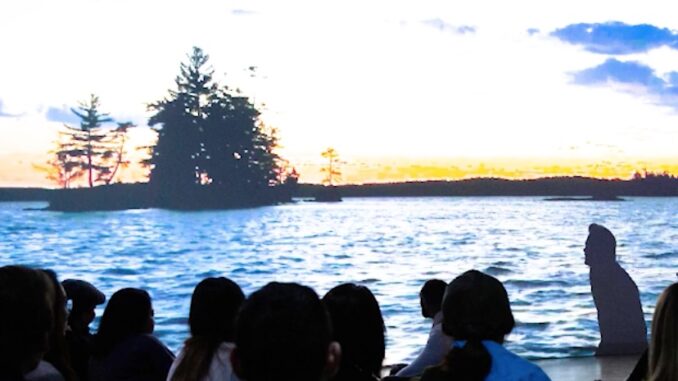
We have been experimenting with creating immersive learning experiences for several years. These experiences are designed to make full use of the spaces within which learning is taking place to use much more than text on a page or small screen, indeed, to engage more of the entire physical presence of students in the learning experience.
Our initial attempts made use of typical classrooms or other non-specialized venues that were staged for particular learning experiences, often with a good deal of design and development work to create the setting. For example, we staged a restaurant setting for a working lunch at a design event.
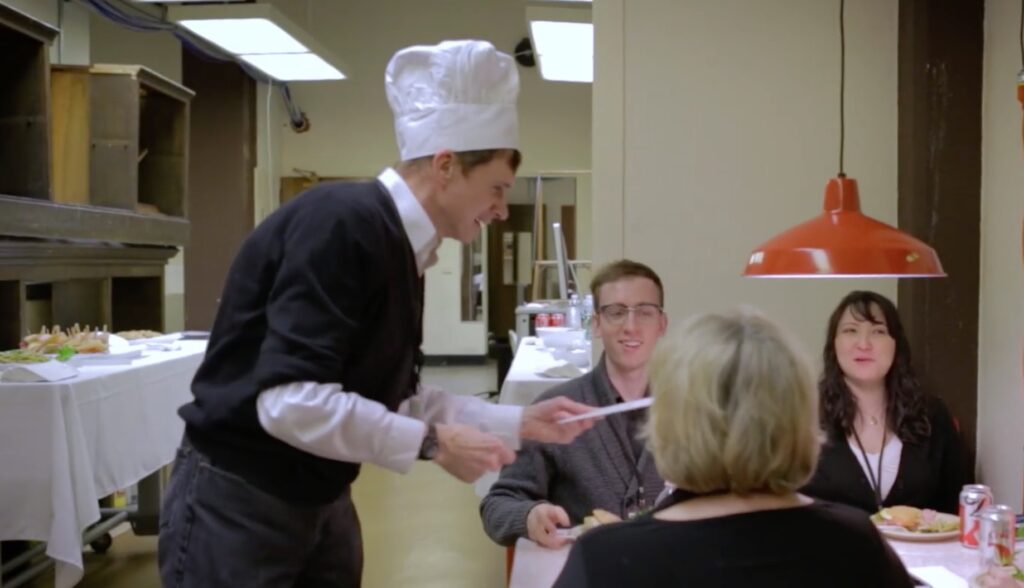
From there we moved to using a space designed to allow large scale projections to create environments to support certain learning scenarios. For example, in one instance we featured a book shelf projection to introduce a collection of books.
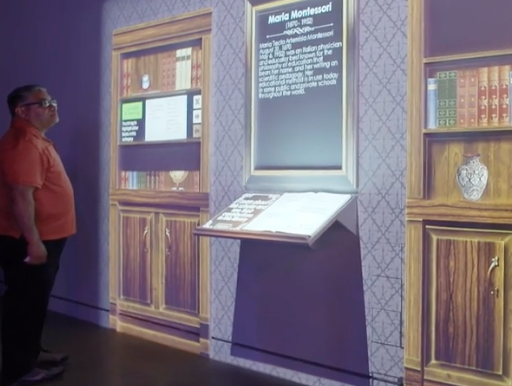
In another instance we used a highway leading into a desert landscape to create the future prospect for university planning and financial viability.
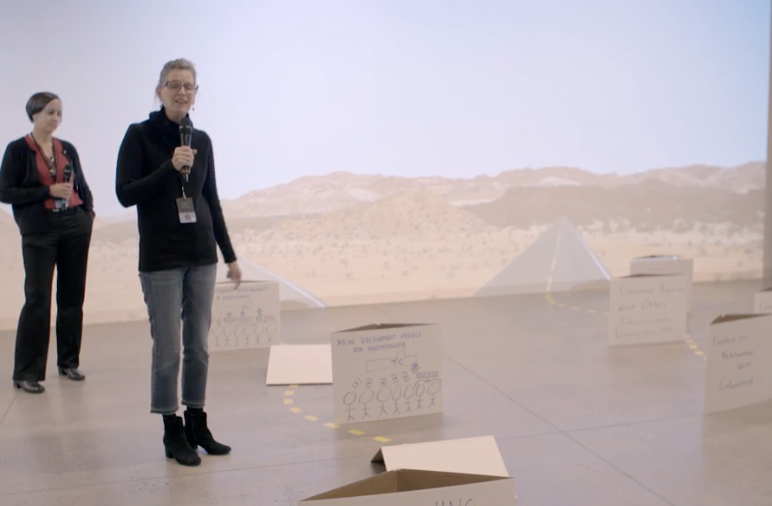
In yet another instance we created a sunrise on a lake setting to take students to a serene environment to begin a new day of learning.
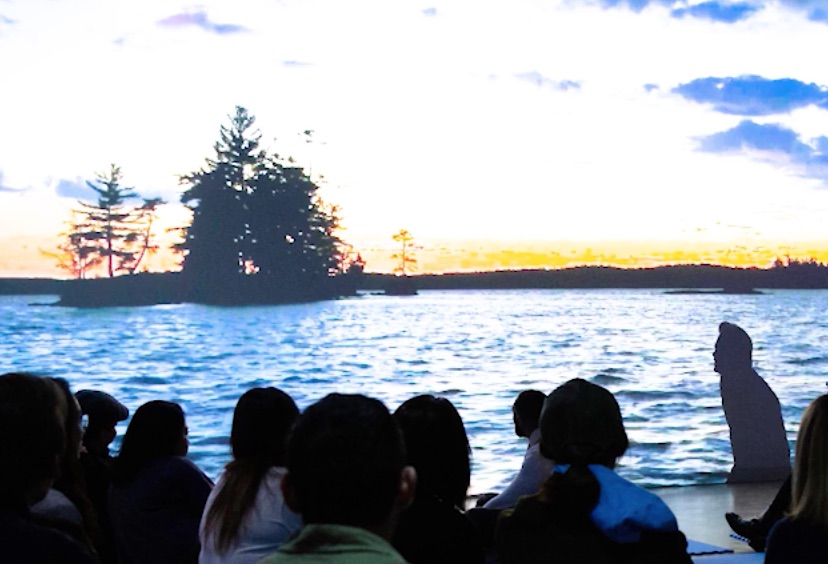
In perhaps our most elaborate experiment, we created a Martian landscape to convey the experience of landing on Mars.
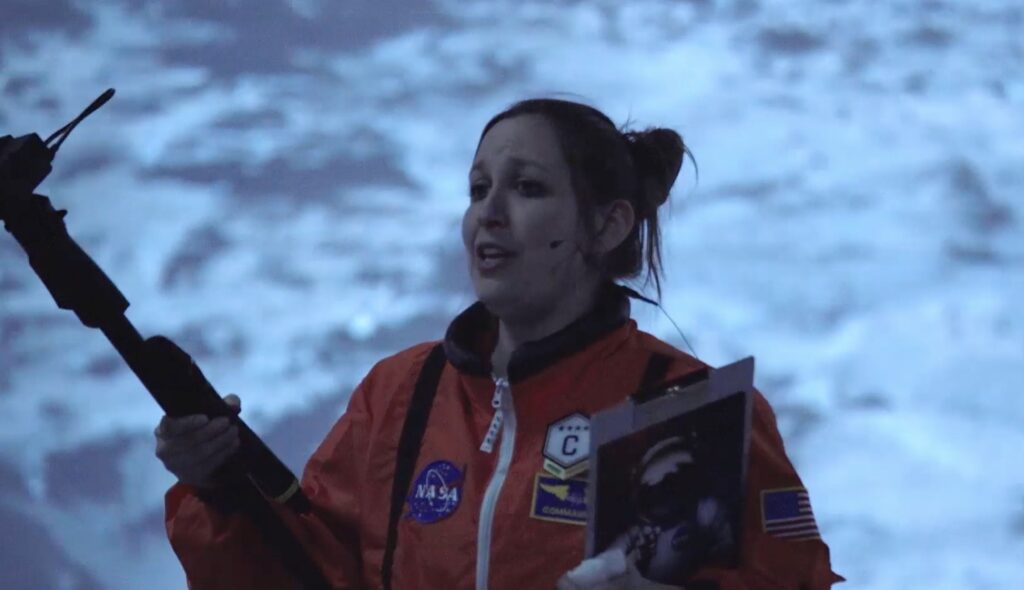
And we used a floor projection to provide a large scale map of resource locations on the red planet.
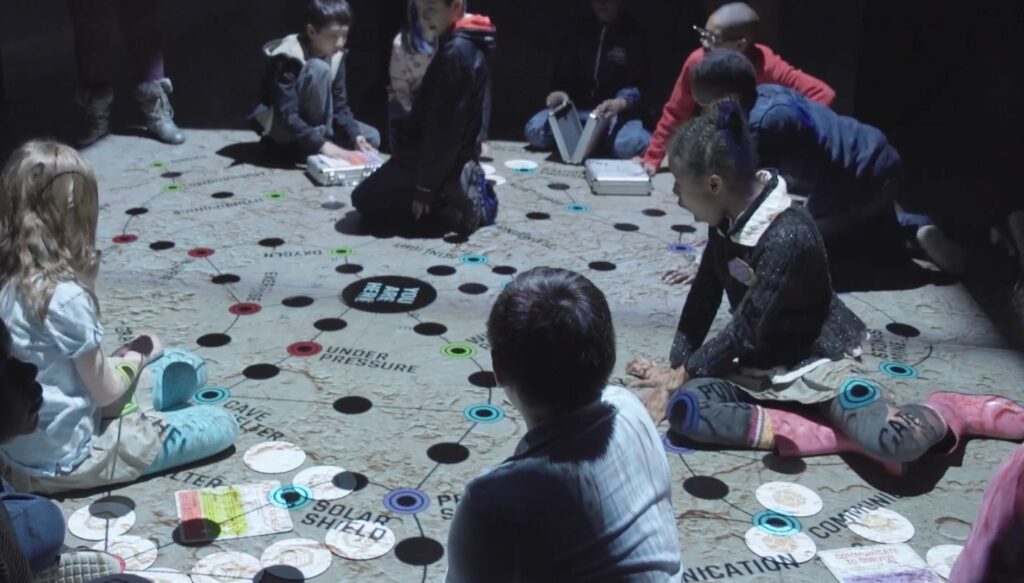
Of course we are not the only ones developing immersive learning experiences. An article in the New York Times highlighted the use of immersive settings at RPI.

This setting looks familiar to those of us who visited EMPAC at RPI several years ago and saw the technology setup in development.

The impact of these immersive learning experiences in higher education has been very encouraging. There seems to be many learning areas where such immersion can be particularly effective. The good news is that technology is advancing rapidly, and we will very shortly have a new set of tools that are currently being developed in connection with the production of feature films and television series.
This short video on the process of producing The Mandalorian shows what is possible by combining game engine real time rendering together with video wall technology to create immersive sets that can be experienced by actors as they move through a scene with the entire creation, live action and projection backgrounds, captured on video.
For something slightly less advanced but no less impactful, check out the use of large scale projection on stage in the 2020 version of West Side Story. In this case the large scale video projection is drawing on live video from the show itself to create the stage sets in real time.
The underlying technologies along with the innovative practices that they permit will make their way into teaching and learning. The challenge for educators will be to learn how to apply these new tools to create effective learning experiences.


Be the first to comment